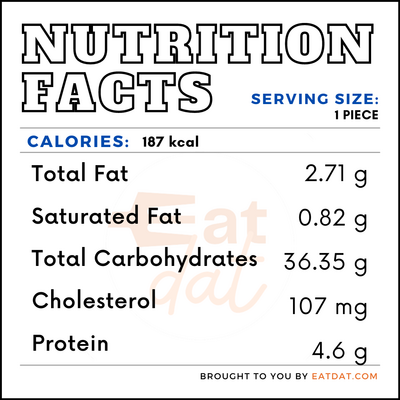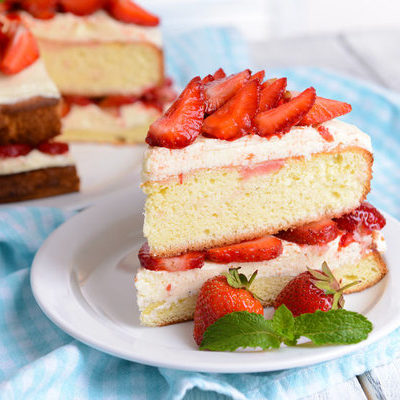In 2019, the global cake market was valued at $42.94 billion with dessert cakes making up half of that. This cake is the fastest-growing segment of the cake market and is estimated to grow by 3.7%. Every year, people celebrate this traditional dessert on August 23rd.
Some popular varieties of this cake include:
- Ma Lai Gao
- Angel Food Cake
- Chiffon Cake
- Boston Cream Pie
- Tipsy Cake
- Trifle
- Victoria Sponge
Origin of sponge cake
Italian cooks are often credited with creating sponge cake during the Renaissance period of 1420 to 1520. These original creations were referred to as “biscuits” and would later evolve into the light and airy cake we know today. The first record of a recipe for this cake was in 1615 by the English poet and author Gervase Markham. However, this dessert was much thinner and crispier than a conventional cake and resembled a cookie.
Many believe that the name “sponge cake” came about in the 17th century in reference to the crumb from this baked good. Through the 18th century, the process of making this cake continued to evolve as baking methods became more complex. By the 19th century, many bakers were using beaten egg whites, which led to the development of the modern sponge cakes. Nowadays, there are many versions of this fluffy cake being enjoyed in countries and cultures all over the world.
Nutrition
While it is lighter than many other desserts, this cake certainly packs on the carbs. A thin slice of this cake can contain:

It also provides noticeable amounts of vitamin A, calcium, potassium, and iron. It is possible to make a healthier version of this dessert by reducing the number of eggs.
Commercial production
The commercial production begins with mixing flour, eggs, and sugar. These ingredients are combined in a mixer to create a smooth batter. Next, the batter is placed in a separate high-speed mixer, which injects nitrogen into the batter. Then, the batter is placed on a tray and sent to the oven to bake. After this cake is baked, it is left to cool down before it’s packaged, labeled, and shipped off to stores and bakeries.
Uses
Light and fluffy sponge cakes taste best when it’s fresh out of the oven. However, if you want to keep your cake to enjoy later, it’s vital to store it properly. The best way to keep your cake moist and flavorful is to store it in an airtight container or wrap it in cling film. If your cake doesn’t have any cream, it can be tightly wrapped and safely stored at room temperature for 7-10 days. Although if it does have cream, make sure that you wrap any leftovers and store them in the refrigerator for no more than 1 week.
Sponge cake recipes
This cake is a popular dessert that can be reinvented in many ways. Here are some popular recipes:
FDA Regulation
The Food & Drug Administration defines sponge cake as a lightweight cake without icing, filling, or heaving ingredients. Typically, these cakes should not weigh more than 4 grams per cubic inch. The FDA also regulates the labeling of this food and specifies the reference amount and label statement that producers should include on labels.
References
Stradley, Linda. “Sponge Cake History.” Whatscookingamerica.net, What’s Cooking America, 8 Nov. 2016, whatscookingamerica.net/History/Cakes/SpongeCake.htm.
“Sponge Cake: Baking Processes.” Bakerpedia.com, BAKERpedia, 24 Jan. 2020, bakerpedia.com/processes/sponge-cake/.
“Types Of Sponge Cake – Sponge Cake History.” Thenibble.com, The Nibble, 23 Aug. 2015, blog.thenibble.com/2015/08/23/food-101-sponge-cake-history-types/.
“Product Categories and Products.” U.S. Food and Drug Administration, FDA, 4 Sept. 2014, www.fda.gov/product-categories-and-products.

